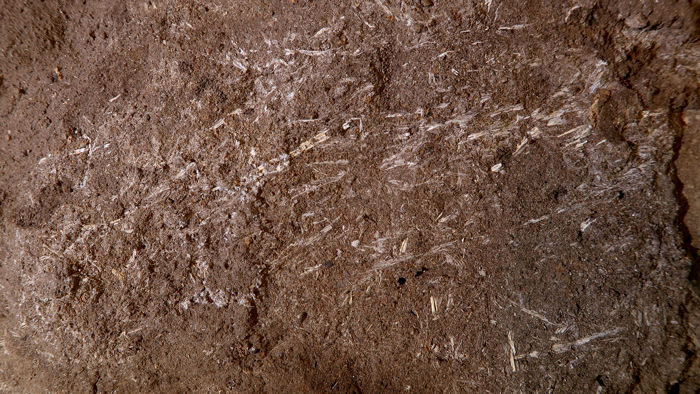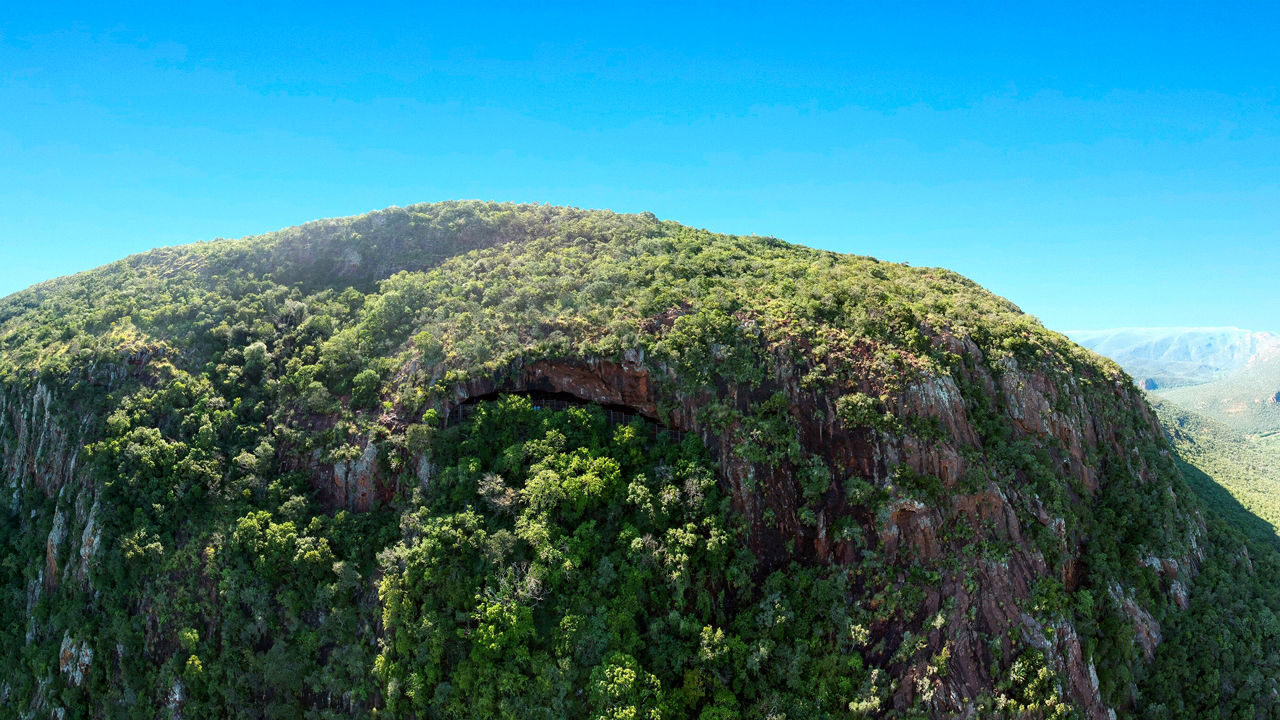The preserved bedding will join the ranks of other "incredible discoveries" from the African archaeological record, says Javier Baena Preysler, an archaeologist at the Autonomous University of Madrid who was not involved in the research. But other researchers point to uncertainty in the dates and note that absent a time machine, scientists have to speculate about exactly how ancient people used the piled-up grasses and ash.
Lyn Wadley, an archaeologist at the University of the Witwatersrand, made the discovery when excavating Border Cave with her team. One morning, she noticed white flecks in the brown earth of the sediment as she was digging. "I looked up at these with a magnifying glass and realized that these were plant traces," she says.
Wadley carefully removed small chunks of the sediment and stabilized them in little "jackets" of gypsum plaster. Under the microscope, she identified that plant matter as belonging to the Panicoideae family of grasses that grows in the area.

The researchers can't know for sure that people slept on the grass. But they describe it as "bedding" because it seemed likely that humans would use the comfortable floor surface for sleeping. It's "the most plausible interpretation," Baena Preysler agrees.
The layer of sediment containing the grass lies deep within the excavated layers in the cave, close to the bedrock. Researchers have dated two isolated teeth found within the same layer to about 200,000 years ago by measuring how much radiation the tooth enamel had been exposed to. The date ranges for the two teeth are broad, with one slightly older than 200,000, and the other slightly younger.
Using dates from just these two teeth is a bit shaky, says Dani Nadel, an archaeologist at the University of Haifa who was not involved with the work: "Sometimes such dates are not very accurate."
If the dates hold up, the Border Cave beds would be the earliest evidence of humans using camp bedding. The second oldest known plant bedding, in South Africa's Sibudu Cave, has been dated to 77,000 years ago, although there is tentative evidence of beddinglike plant layering from about 185,000 years ago in Israel.
The bedding itself "doesn't really tell us anything about the complex cognition of humans," Wadley says. Plenty of other animal species, including birds, rodents, and other primates make nests. But material discovered alongside the grass does hint at more elaborate behaviors. Ash, as well as burnt grass, wood, and bone, suggests the cave's inhabitants may have periodically burned the bedding, possibly to rid the site of "smelly bedding and pests," Wadley says. Some of that burned wood came from the broad-leaved camphor bush, a species still used as an insect repellent in South Africa.
The repeated layers of ash and plant material suggest ancient humans deliberately laid bedding over ash, Wadley says. People around the world, including in present-day Cameroon, have long used various kinds of ash to repel and kill insects by blocking their breathing and biting apparatus. The evidence in Border Cave suggest humans deliberately used ash and medicinal plants to keep their camps clean and pest-free, Wadley and her colleagues report today in Science.
However, "It's very difficult to prove this," says Dan Cabanes, a microarchaeologist at Rutgers University, New Brunswick: "You can't ask these people."
Still, he says, the discovery highlights how much of the botanical record is probably being missed in archaeological sites worldwide. Plants make up a huge part of modern humans' diets, alongside a range of other uses from clothes to medicine, so there is good reason to think that our ancestors relied heavily on plants in their daily lives, Cabanes says. But the subtle traces of ancient plants can be easily overlooked, he says: "How much of this story are we missing?"
doi:10.1126/science.abe3212




Roll over Roy Castle!!!! Tell Ross and Norris McWhirter the news!!!!